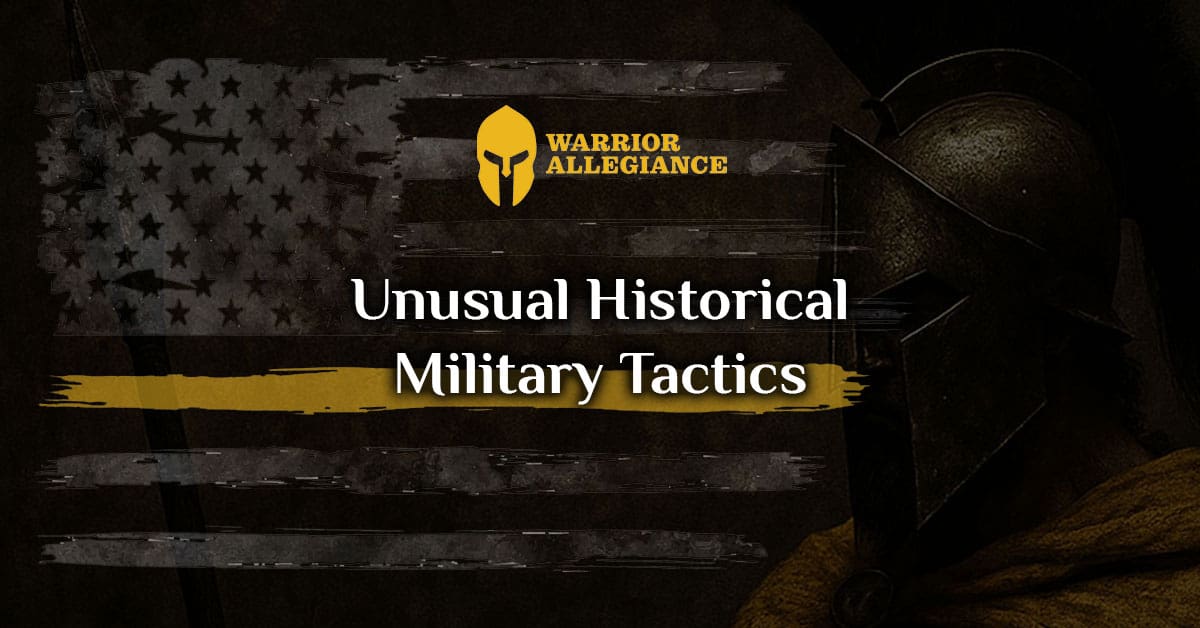Unusual Historical Military Tactics
Throughout history, military leaders have employed a variety of unconventional tactics to gain the upper hand in battle. These unusual strategies often reflect creative thinking, ingenuity, and a willingness to take risks. This blog explores some of the most bizarre and unconventional military tactics used in historical battles, highlighting their effectiveness and the innovative minds behind them.
The Trojan Horse: Deception and Surprise
One of the most famous examples of an unconventional military tactic is the Trojan Horse. During the Trojan War, the Greeks used a giant wooden horse to infiltrate the city of Troy. Disguised as a gift, the horse contained Greek soldiers who emerged at night to open the gates for their comrades, leading to the fall of Troy. This tactic demonstrated the power of deception and surprise in achieving military objectives.
Hannibal’s Use of War Elephants
Hannibal Barca, the Carthaginian general, is renowned for his audacious use of war elephants in the Second Punic War against Rome. Hannibal famously crossed the Alps with his elephants, a feat that struck fear into the hearts of the Romans. The sheer size and power of the elephants gave Hannibal a psychological edge, although the harsh conditions took a toll on his forces. Despite the challenges, Hannibal’s bold strategy showcased his willingness to employ unconventional tactics to challenge the might of Rome.
The Night Witches of World War II
During World War II, the Soviet Union deployed a unique squadron of female pilots known as the Night Witches. These women flew outdated biplanes on nighttime bombing missions against German forces. Their tactic was to cut their engines and glide silently over enemy positions, dropping bombs before restarting their engines and escaping into the night. This stealthy approach made the Night Witches highly effective and difficult to counter, earning them the respect and fear of their adversaries.
Operation Mincemeat: The Art of Deception
Operation Mincemeat was a British deception operation during World War II designed to mislead the Axis powers about the Allies’ invasion plans. The British intelligence services planted false documents on a corpse disguised as a Royal Marine officer, which they then released near the Spanish coast. The documents suggested that the Allies planned to invade Greece and Sardinia, diverting German forces away from the actual invasion targets of Sicily and Italy. This elaborate ruse demonstrated the effectiveness of misinformation and psychological warfare.
The Siege of Tyre: Engineering Ingenuity
In 332 BCE, Alexander the Great faced the challenge of capturing the heavily fortified island city of Tyre. Rather than engaging in a prolonged siege, Alexander employed an innovative tactic: he constructed a causeway, or mole, to connect the mainland to the island. This engineering feat allowed his forces to breach the city’s defenses and achieve a swift victory. Alexander’s use of engineering ingenuity and unconventional tactics secured his reputation as a brilliant military strategist.
The Great Wall of China: Defensive Innovation
The Great Wall of China is one of the most iconic examples of military fortification. Originally built to protect against invasions from northern tribes, the Great Wall spanned thousands of miles and incorporated various defensive innovations. Watchtowers, signal fires, and strategically placed garrisons allowed Chinese forces to effectively monitor and respond to threats. The Great Wall demonstrated the power of strategic infrastructure and defensive tactics in safeguarding a nation.
The Battle of Agincourt: The Power of the Longbow
The Battle of Agincourt in 1415 saw the English army, led by King Henry V, achieve a decisive victory over the French despite being vastly outnumbered. The key to this success was the use of the longbow, a weapon that allowed English archers to decimate the French forces from a distance. The longbow’s range, accuracy, and rate of fire gave the English a significant tactical advantage, demonstrating the impact of technological innovation in warfare.
The Spartan Phalanx: Discipline and Formation
The Spartan phalanx was a formidable military formation characterized by its discipline, cohesion, and effectiveness in close combat. Spartan soldiers, known as hoplites, fought in tight ranks with overlapping shields and long spears, creating an impenetrable wall of defense. This tactic required rigorous training and coordination, allowing the Spartans to dominate the battlefield. The phalanx demonstrated the importance of discipline, unity, and tactical innovation in achieving military success.
The Kamikaze Tactic: Sacrifice and Determination
During World War II, Japanese pilots employed the kamikaze tactic, a form of suicide attack aimed at inflicting maximum damage on enemy ships. Kamikaze pilots would deliberately crash their aircraft, loaded with explosives, into Allied vessels. This tactic reflected the intense dedication and willingness to sacrifice for one’s country, as well as the desperation faced by Japan in the final stages of the war. While controversial, the kamikaze attacks demonstrated the psychological impact and destructive potential of unconventional warfare.
The Ghost Army: Illusion and Misdirection
The Ghost Army was a top-secret unit of the U.S. Army during World War II tasked with deceiving German forces through elaborate illusions and misdirection. The unit used inflatable tanks, fake radio transmissions, and sound effects to create the illusion of large troop movements and deployments. Their efforts successfully misled German forces, allowing Allied operations to proceed with reduced resistance. The Ghost Army’s use of deception and psychological warfare showcased the power of creativity and innovation in military strategy.
Conclusion
Unconventional military tactics have played a pivotal role in shaping the course of history. These bizarre and innovative strategies demonstrate the importance of creativity, ingenuity, and adaptability in warfare. From deception and psychological warfare to technological innovation and engineering feats, these tactics have provided military leaders with the tools to achieve victory against formidable odds.

